Lactate dehydrogenase (LDH) is an enzyme found in most living organisms responsible for the conversion of pyruvate, the end product of glycolysis, into lactic acid With this conversion, the molecule also uses a unit of the energy transferring molecule NADH, releasing the hydrogen to produce NAD, allowing glycolysis to continueBOX 141 Glycolysis without Oxygen Alligators and Coelacanths Most vertebrates are essentially aerobic organisms;The conversion to lactate or ethanol under anaerobic conditions allows for the reoxidation of NADH to NAD in the absence of oxygen Figure 17 Metabolic Fates of Pyruvate AEROBIC In humans and other organisms under aerobic conditions, pyruvate is converted to acetyl CoA
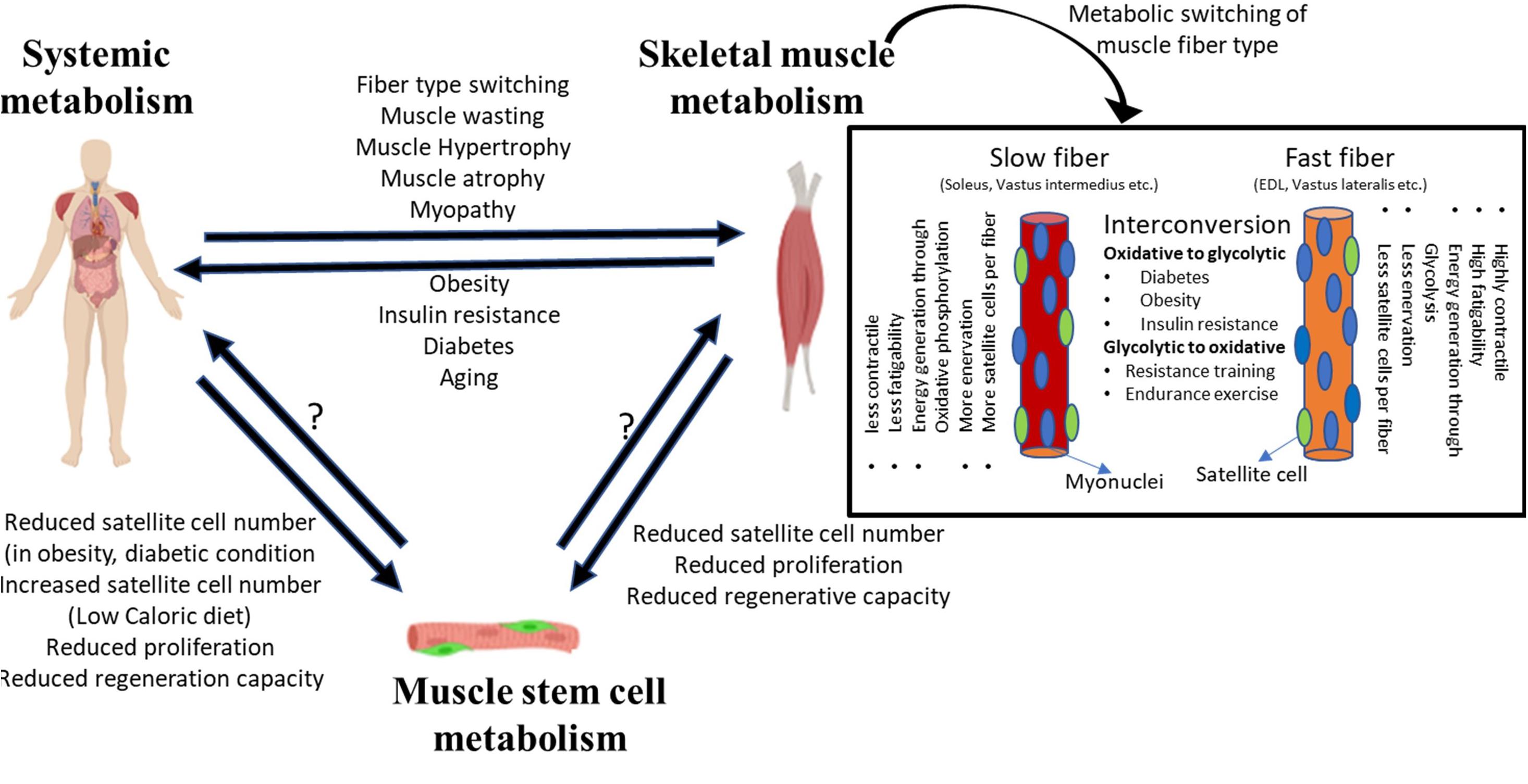
Frontiers Adult Muscle Stem Cells Exploring The Links Between Systemic And Cellular Metabolism Cell And Developmental Biology
In absence of oxygen pyruvate is converted into lactate in muscle because
In absence of oxygen pyruvate is converted into lactate in muscle because-When there is sufficient oxygen, this pyruvate is fully broken down Name two substances formed from the pyruvate (1) Water ATP NADH FADH CO2 4 If there is shortage of oxygen in muscle cells during exercise, some pyruvate is converted into lactate Explain why muscles become fatigued when insufficient oxygen is a availableIt shouldn't, and isn't Glycolysis doesn't work on pyruvate as a reactant;



I M Struggling To Understand Fermentation In Animals Is The Pyruvate Present To Accept The Hydrogen Present From Aerobic Respiration If Pyruvate Is Accepting The Hydrogen Surely That Means Nad Is Being Regenerated
Much more lactate than pyruvate is transported out because the high NADH/NAD ratio in contracting skeletal muscle favors the conversion of pyruvate into lactate The lactate that enters the liver is oxidized to pyruvate, a reaction favored by the low NADH/NAD ratio in the cytosol of liver cellsAlthough glycolysis doesn't require oxygen, the fate of the pyruvate molecules depends on whether oxygen is present If oxygen isn't available, the pyruvate is converted to lactate, and no additional ATP is produced from this conversion If oxygen is present, the pyruvates are transported into the mitochondrial matrixFigure 3 Click to view a larger image The process of anaerobic respiration converts glucose into two lactate molecules in the absence of oxygen or within erythrocytes that lack mitochondria During aerobic respiration, glucose is oxidized into two pyruvate molecules
When pyruvate converted to lactate, ATP resynthesis occurs at a fast rate but for a limited amount of time and called "Fast Glycolysis" Lactate can be cleared by the oxidation within muscle fiber it was produced or it can be transported in the bIn the absence of oxygen, fermentation leads to the production of _____ Glycolysis plus the citric acid cycle can convert the carbons of glucose to _____ , storing the energy as ATP, _____ and _____ In glycolysis, glucose with six carbons is converted into two molecules of pyruvateFermentation steps act to increase the rate of glycolysis 2 The Krebs cycle If oxygen is present, pyruvate from glycolysis is sent to the mitochondria
When sufficient oxygen is not present in the muscle cells for further oxidation of pyruvate and NADH produced in glycolysis, NAD is regenerated from NADH by reduction of pyruvate to lactate lactate is converted to pyruvate by the enzyme lactate dehydrogenase NADH is oxidized to NAD during this reactionThey first convert glucose into pyruvate by glycolysis and then oxidize the pyruvate completely to CO 2 and H 2 O using molecular oxygen Anaerobic catabolism of glucose (fermentation to lactate) occurs in most vertebrates, including human beings, during short The microenvironment of the cell determines the fate of pyruvate following the initial ten steps of glycolysis If a cell lacks mitochondria, is poorly oxygenated, or energy demand has rapidly increased to exceed the rate at which oxidative phosphorylation can provide sufficient ATP, pyruvate can be converted to lactate by the enzyme lactate dehydrogenase
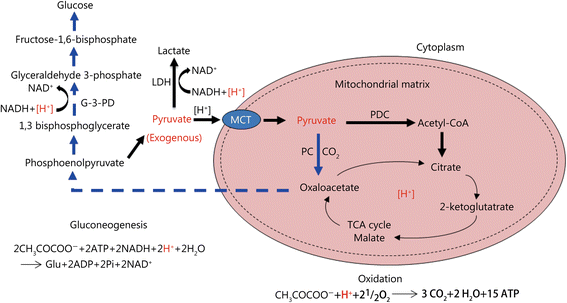



Pyruvate Is A Prospective Alkalizer To Correct Hypoxic Lactic Acidosis Military Medical Research Full Text
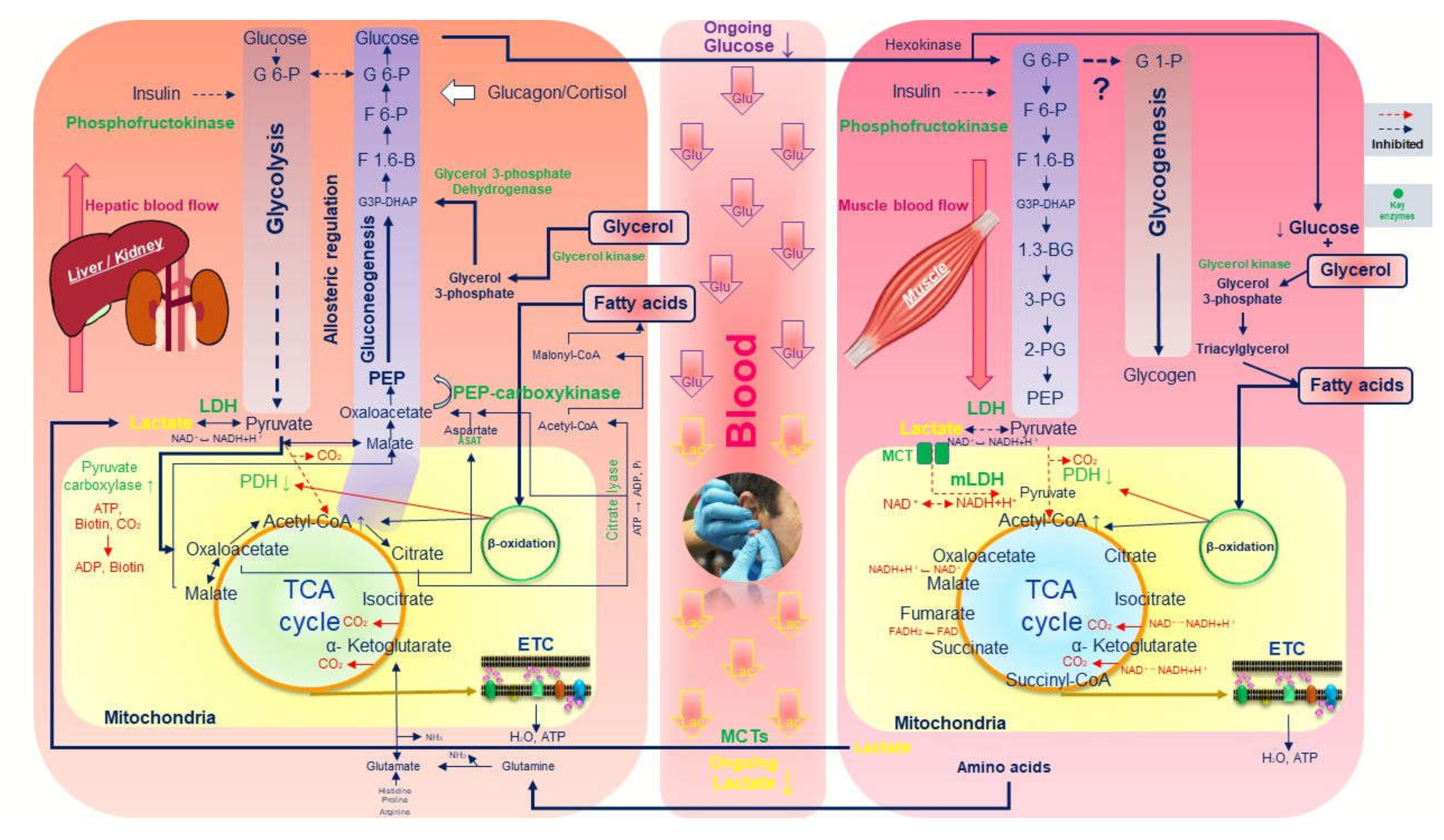



Ijerph Free Full Text Decreased Blood Glucose And Lactate Is A Useful Indicator Of Recovery Ability In Athletes Html
Pyruvate from glycolysis is converted to ethyl alcohol;Converts it to pyruvate In the absence of oxygen, pyruvate is converted to lactate When oxygen is present, pyruvate is further degraded to form acetylCoA Significant amounts of energy in the form of ATP can be extracted from acetylCoA by the citric acid cycle and the electron transport systemUndergo lactate fermentation Two pyruvates are converted to two lactic acid molecules, which ionize to form lactate In this process two NADH H are converted to two NAD Our muscle cells can undergo this process when they are in oxygen debt If enough oxygen is not present to undergo aerobic respiration, pyruvate will undergo lactic acid




Solved 10 4 1 Point Lactate Produced By Anaerobic Muscle Chegg Com
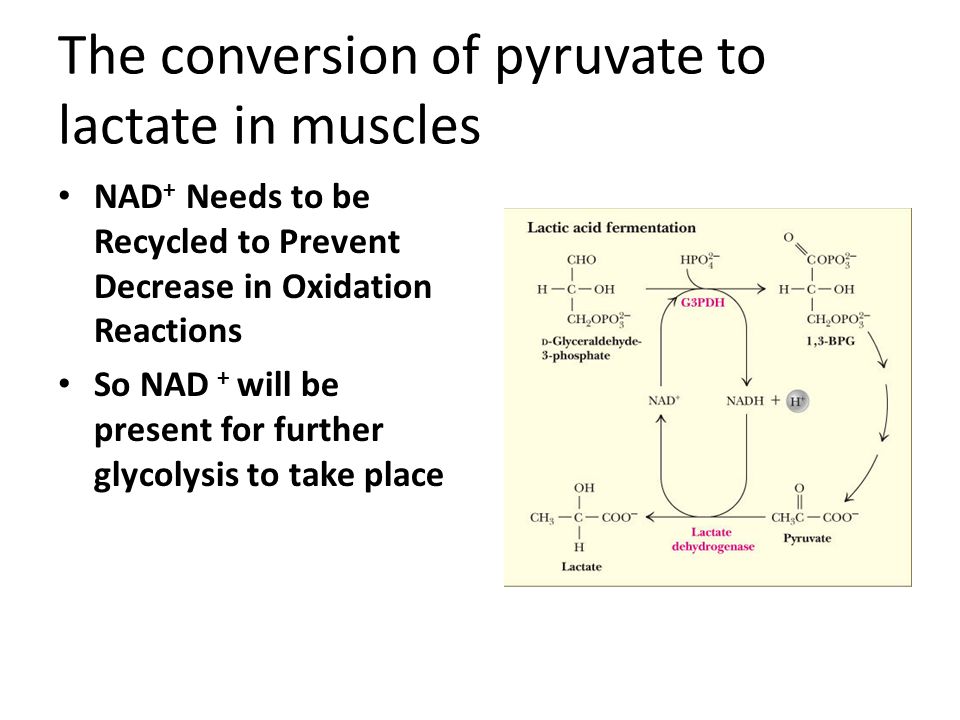



Carbohydrate Catabolism Ppt Download
I think you will find all text books (eg Berg et al Ch 16) describe glycolysis as the conversion of glucose to pyruvate, as this is how it has been defined and considered in countless biochemical papersThe subsequent reactions of pyruvate are regarded as separate metabolic steps or pathways The title of the short review article you cite ("Lactate is always the endCell division, protein synthesis, transmission or nerve impulses and muscle cell contraction the pyruvate is converted into lactate Where does stage one and two of fermentation in animal and plant cells occur?During lactic acid fermentation, pyruvate is reduced to form lactate as an end product Without fermentation and anaerobic respiration, we wouldn't have yogurt or soy sauce Nor would our muscle cells cramp from the buildup of lactate when we exercise vigorously and oxygen is scarce




Frontiers Adult Muscle Stem Cells Exploring The Links Between Systemic And Cellular Metabolism Cell And Developmental Biology



Metabolism Problem Set
Pyruvate is converted to lactate under anaerobic conditions because ________ asked in Chemistry by MsBeauty79 A) reduction of pyruvate provides NAD which is needed for glycolysis B) lactate releases oxygen upon conversion to acetylCoA C) reduction of pyruvate provides NADH which is needed for gluconeogenesisFrom glycolysis with the pyruvate molecules to create the NAD necessary to begin glycolysis Lactate is then formed as a byproduct of this reaction The lactate produced will eventually protonate into lactic acid This lactic acid continues building up in the muscles until oxygen is reintroduced into Basic Diagram Lactic Fermentation LACTATE METABOLISM Lactate is synthesized from pyruvate and can also be converted back to pyruvate This reversible reaction is catalyzed by the enzyme lactate dehydrogenase Lactate dehydrogenase has much greater binding affinity for llactate, so when dlactate is present it is metabolized at a slower rate
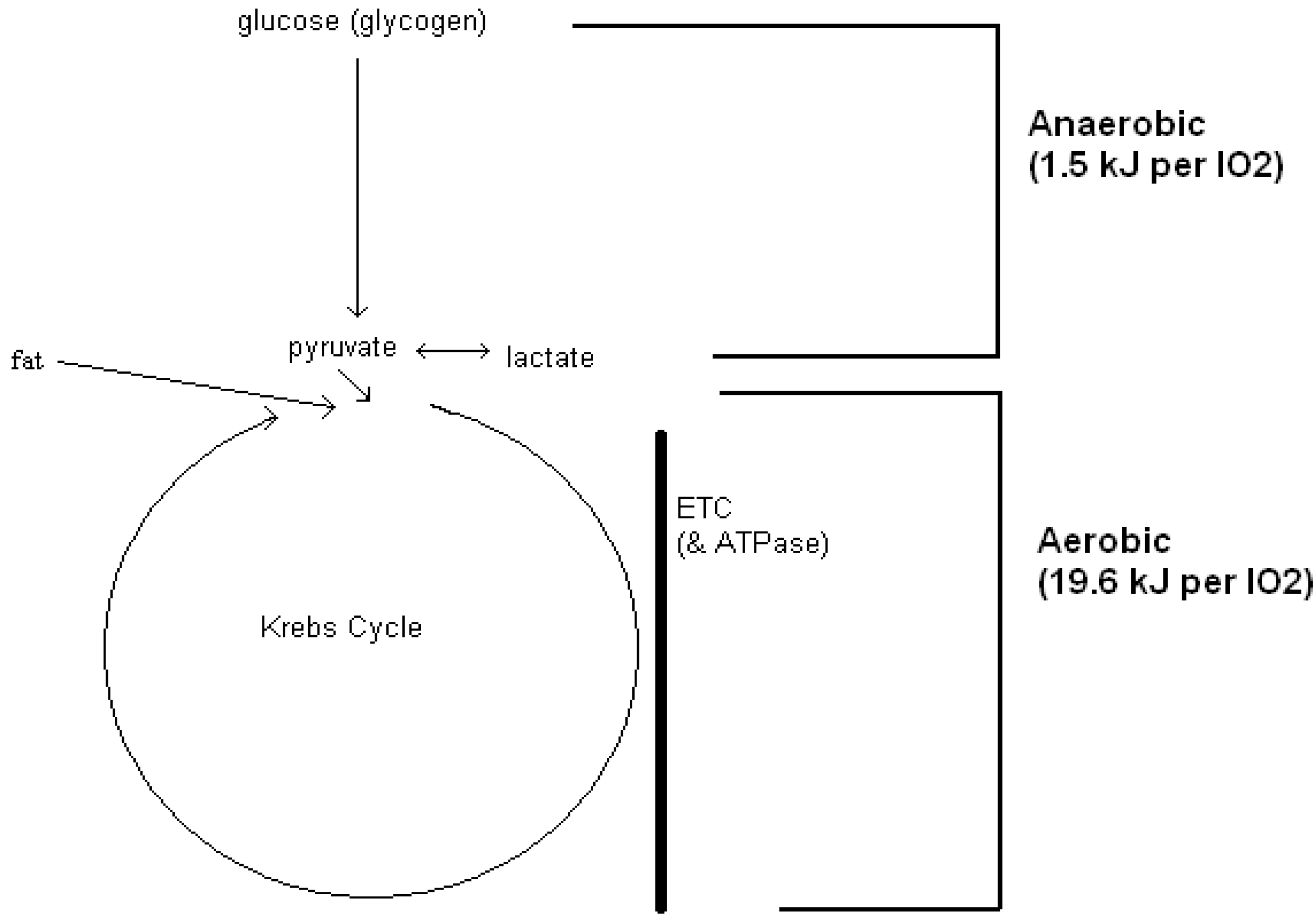



Biology Free Full Text Combustion Respiration And Intermittent Exercise A Theoretical Perspective On Oxygen Uptake And Energy Expenditure Html



1
Glycolysis is the metabolic process that synthesizes two adenosine triphosphate (ATP) molecules as the end product in the absence of oxygen via the glucose conversion to water, pyruvate, and nicotinamide adenine dinucleotide (NADH) However, the conversion of glucose to lactate with low concentrations of oxygen is defined as anaerobic glycolysis Normally glucose is converted to two pyruvate molecules which are then oxidized in the Krebs cycle Since oxygen is required for this step the pyruvate accumulates and is converted to lactateHowever, in the absence of oxygen (that is, under anaerobic conditions), the fate of pyruvate is different in different organisms In vertebrates, pyruvate is converted to lactate, while other organisms, such as yeast, convert pyruvate to ethanol and carbon dioxide




Pyruvate Metabolism In Plants Under Oxygen Deficiency 1 Glycolysis Download Scientific Diagram
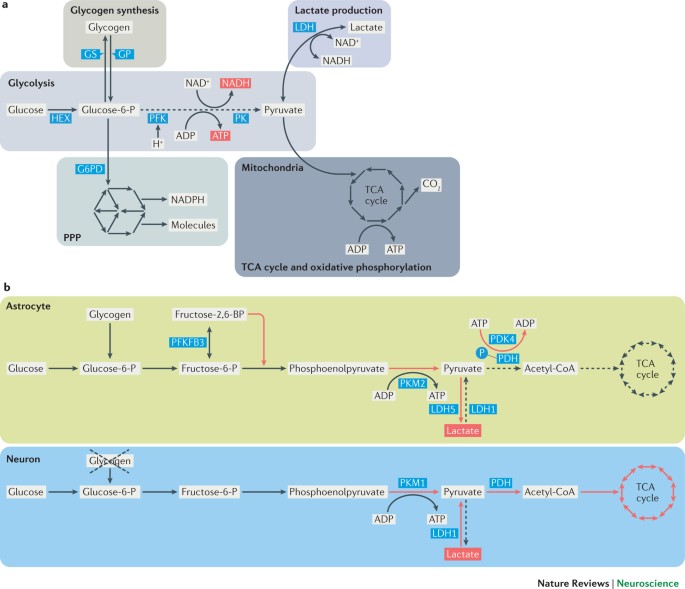



Lactate In The Brain From Metabolic End Product To Signalling Molecule Nature Reviews Neuroscience
LACTATE FERMENTATION occurs in muscle, erythrocytes, and some other cells The pyruvate made in red blood cells is converted to lactate by the enzyme lactate dehydrogenase This mite be confusing since there are a lot of oxygen in red blood so why pyruvate isn't converted to acetyl CoA and enter the TCA cycleWhen sufficient oxygen is not present in the muscle cells for further oxidation of pyruvate and NADH produced in glycolysis, NAD is regenerated from NADH by reduction of pyruvate to lactate lactate is converted to pyruvate by the enzyme lactate dehydrogenase NADH is oxidized to NAD during this reaction Because after a certain level of lactate has build up in the body, it becomes toxic and so oxygen is required to convert the lactate back into pyruvate and then glucose in the liver



3 7 Cell Respiration Bioninja
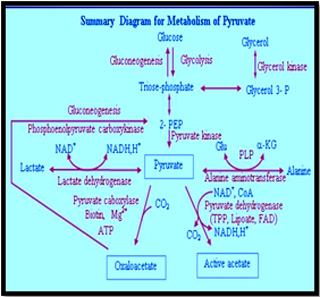



Carbohydrate Metabolism Mcqs Focus Dentistry
When sufficient oxygen is not present in the muscle cells for further oxidation of pyruvate and NADH produced in glycolysis, NAD is regenerated from NADH by reduction of pyruvate to lactate lactate is converted to pyruvate by the enzyme lactate dehydrogenase NADH is oxidized to NAD during this reactionIt does not require oxygen • In the presence of O2, pyruvate is further oxidized to CO2 In the absence of O2, pyruvate can be fermented to lactate or ethanol • Net Reaction Glucose 2NAD 2 Pi 2 ADP = 2 pyruvate 2 ATP 2 NADH 2 H2O The 3 stages of Glycolysis • Stage 1 is the investment stage 2 In vertebrates, pyruvate is converted to lactate, while other organisms, such as yeast, convert pyruvate to ethanol and carbon dioxide These possible fates of pyruvate are summarized in Figure \(\PageIndex{2}\) The conversion to lactate or ethanol under anaerobic conditions allows for the reoxidation of NADH to NAD in the absence of oxygen



2




Biology Notes For A Level 91 Anaerobic Respiration Ethanol And Lactate Pathways
Glycolysis is a linear metabolic pathway of enzymecatalyzed reactions that converts glucose into two molecules of pyruvate in the presence of oxygen or two molecules of lactate in the absence of oxygen The latter pathway, anaerobic glycolysis, is believed to be the first process to have evolved in nature to produce adenosine triphosphate (ATP)Glycolysis is a linear metabolic pathway of enzymecatalyzed reactions that converts glucose into two molecules of pyruvate in the presence of oxygen or two molecules of lactate in the absence of oxygen The latter pathway, anaerobic glycolysis, is believed to be the first process to have evolved in nature to produce adenosine triphosphate (ATP)Answer (1 of 2) Why should pyruvate be converted to lactate in glycolysis?
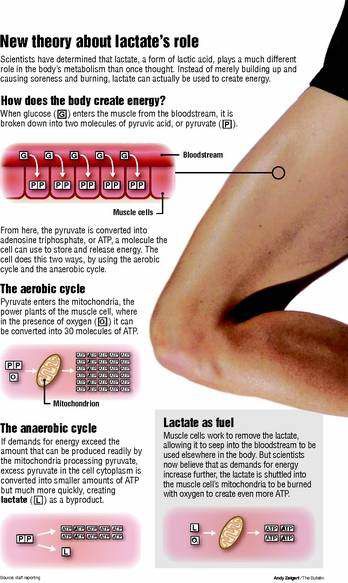



A New View On Lactic Acidresearchers Now Believe Lactate Can Be Used As Fuel Health Bendbulletin Com




Why Everything You Know About Lactic Acid Might Be Wrong Breaking Muscle
In the absence of oxygen Substratelevel phosphorylation In the first step of glycolysis, glucose can be phosphorylated because During strenuous exercise, hypoxic muscle cells convert pyruvate to _____ lactate An energyrequiring pathway is also known as anabolic In the absence of oxygen, pyruvate is converted to lactate, and NADH is reoxidized to NAD In the presence of oxygen, pyruvate is converted to acetylCoA and then enters the citric acid cycle More ATP can be formed from the breakdown of glucose when oxygen is present Click to see full answerIn the cytoplasm Describe fermentation in plant and yeast cells In plant cells, in the absence of oxygen, the pyruvate is
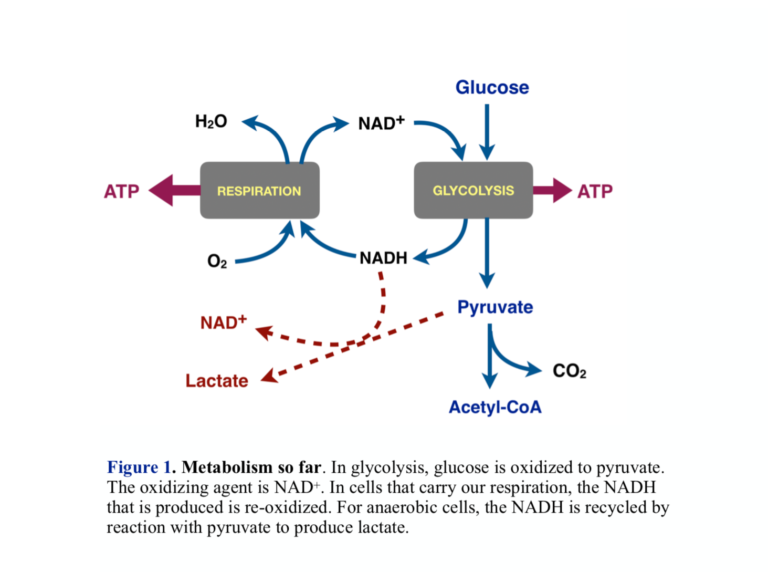



Crossfit Cancer And Metabolism Part 2



Chapter 14 Glycolysis And The Catabolism Of Hexoses
But when oxygen is limited, the body temporarily converts pyruvate into a substance called lactate, which allows glucose breakdown—and thus energy• Glycolysis is anaerobic;Glycolysis is the metabolic pathway that converts glucose C 6 H 12 O 6, into pyruvic acid, CH 3 COCOOH The free energy released in this process is used to form the highenergy molecules adenosine triphosphate (ATP) and reduced nicotinamide adenine dinucleotide (NADH) Glycolysis is a sequence of ten reactions catalyzed by enzymes Glycolysis is a metabolic pathway that does not require oxygen




The Science And Translation Of Lactate Shuttle Theory Cell Metabolism
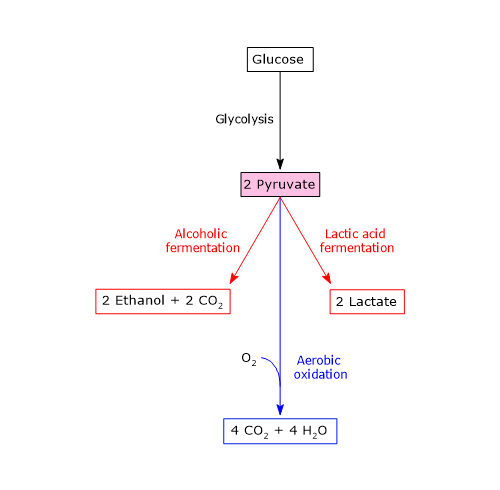



Glycolysis Steps Enzymes And Products
Excess pyruvate is converted into lactate 0 Lactate generation doesn't occur because the mitochondria are unable to function in the absence of oxygen Instead, lactate generation occurs because the TCA cycle simply isn't able to keep up with a very rapid rate of glycolysis 0 0 (3)In any case the excess lactate is gradually carried away by the blood to the liver where it is converted back to pyruvate by liver cells Because oxygen is available, this pyruvate can then enter the mitochondria in liver cells and complete cellular respiration Further, this is almost how alcohol is producedGlycolysis occurs in the cytosol, yielding 2 ATP, 2 pyruvate and 2 (NADH H) from each glucose molecule The glycolytic pathway is present in all cells and has a central role in generating ATP with and without oxygen One mole of glucose is converted to two moles of pyruvate
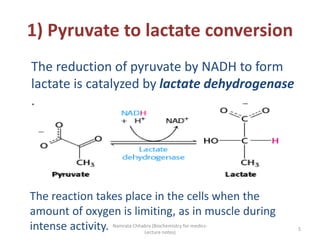



Fate Of Pyruvate A Quick Review
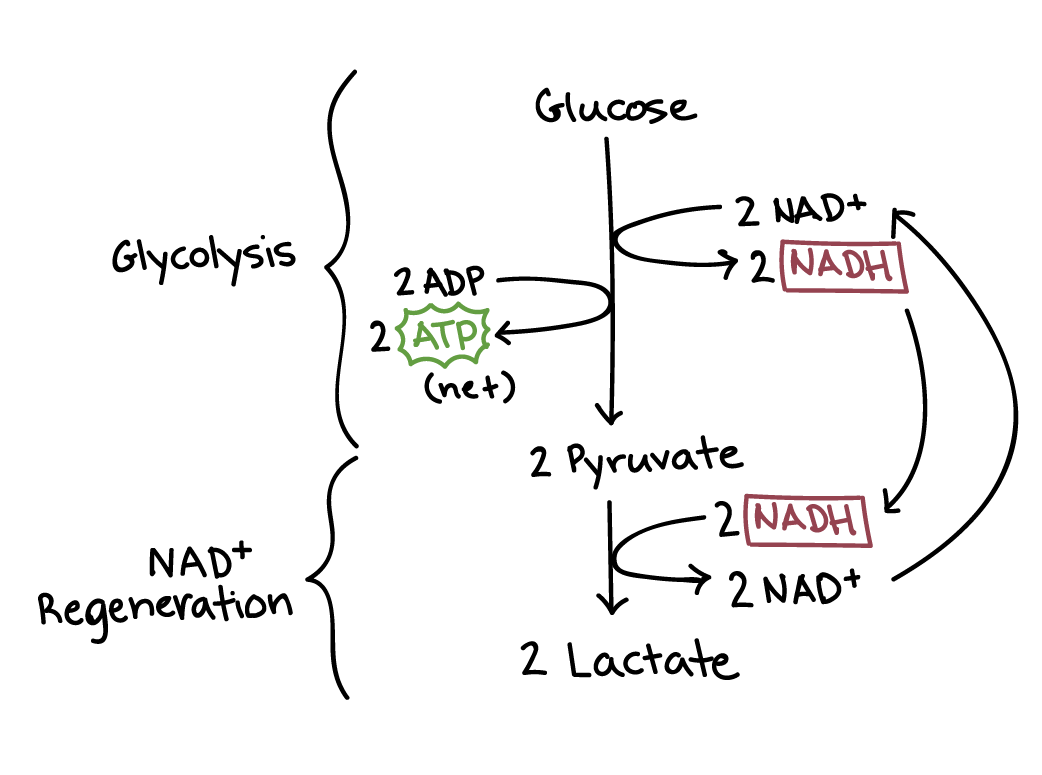



Fermentation And Anaerobic Respiration Cellular Respiration Article Khan Academy
Pyruvate is one of the products of glycolysis What happens to the pyruvate after it is produced by60 seconds Report an issue Q In absence of oxygen, pyruvate is converted into lactate in muscle because _______________ answer choices Lactate is a substrate from the downstream pathway Lactate acts as a substrate for the formation of the amino acid during the product of lactate two ATP are producedIn the presence of oxygen pyruvate is further In the presence of oxygen, pyruvate is further oxidized to carbon dioxide• In the absence of oxygen, pyruvate can be fermented to lactate or ethanol• Net reaction • C6H12O6 2 NAD 2 Pi 2 ADP = 2 pyruvate 2 ATP 2 NADH 2 H Glycogen and glucose are broken down in a series of chemical




Which Of The Following Statement S Is Are Correct I Pyruvate Can Be Converted Into Ethanol And Carbon Dioxide By Yeast Ii Fermentation Takes Place In Aerobic Bacteria Iii Fermentation Takes Place In Mitochondria Iv Fermentation Is




Metabolic And Oncogenic Adaptations To Pyruvate Dehydrogenase Inactivation In Fibroblasts Journal Of Biological Chemistry
In the absence of oxygen (anaerobic conditions), pyruvate is converted into ___ or ___, depending on the organism acetyl CoA In the presence of oxygen (aerobic conditions), pyruvate is converted into a molecule, called ___, that is able to enter the citric acid cycleThis lactate can cause inflammation of muscle tissues, which is why muscles can be sore after vigorous exercise Why do some cells add fermentation steps in the absence of oxygen?
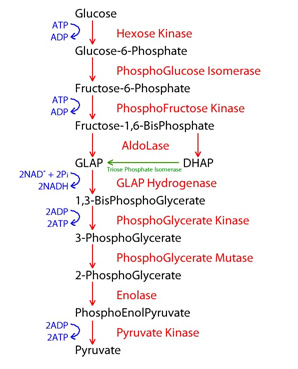



Carbohydrate Metabolism Mcqs Focus Dentistry
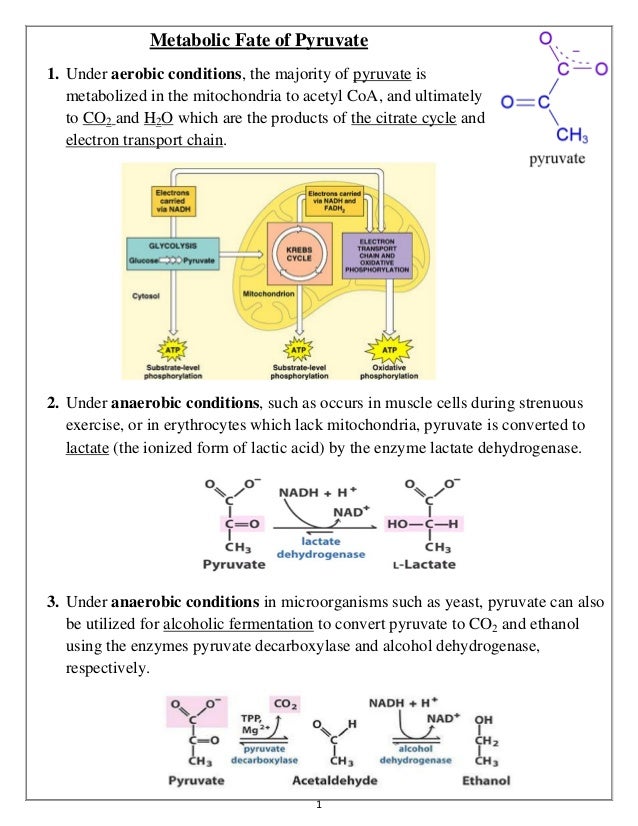



Metabolic Fate Of Pyruvate And Cori Cycle And Alanine Cycle Cori Al




Glycolysis An Overview Sciencedirect Topics




Carbohydrate Metabolism Mcq On Glycolysis Gluconeogenesis




Gluconeogenesis An Overview Sciencedirect Topics



I M Struggling To Understand Fermentation In Animals Is The Pyruvate Present To Accept The Hydrogen Present From Aerobic Respiration If Pyruvate Is Accepting The Hydrogen Surely That Means Nad Is Being Regenerated




Anaerobic Respiration Bioninja



2




Anaerobic Glycolysis An Overview Sciencedirect Topics




What Is Anaerobic Respiration The Definitive Guide Biology Online
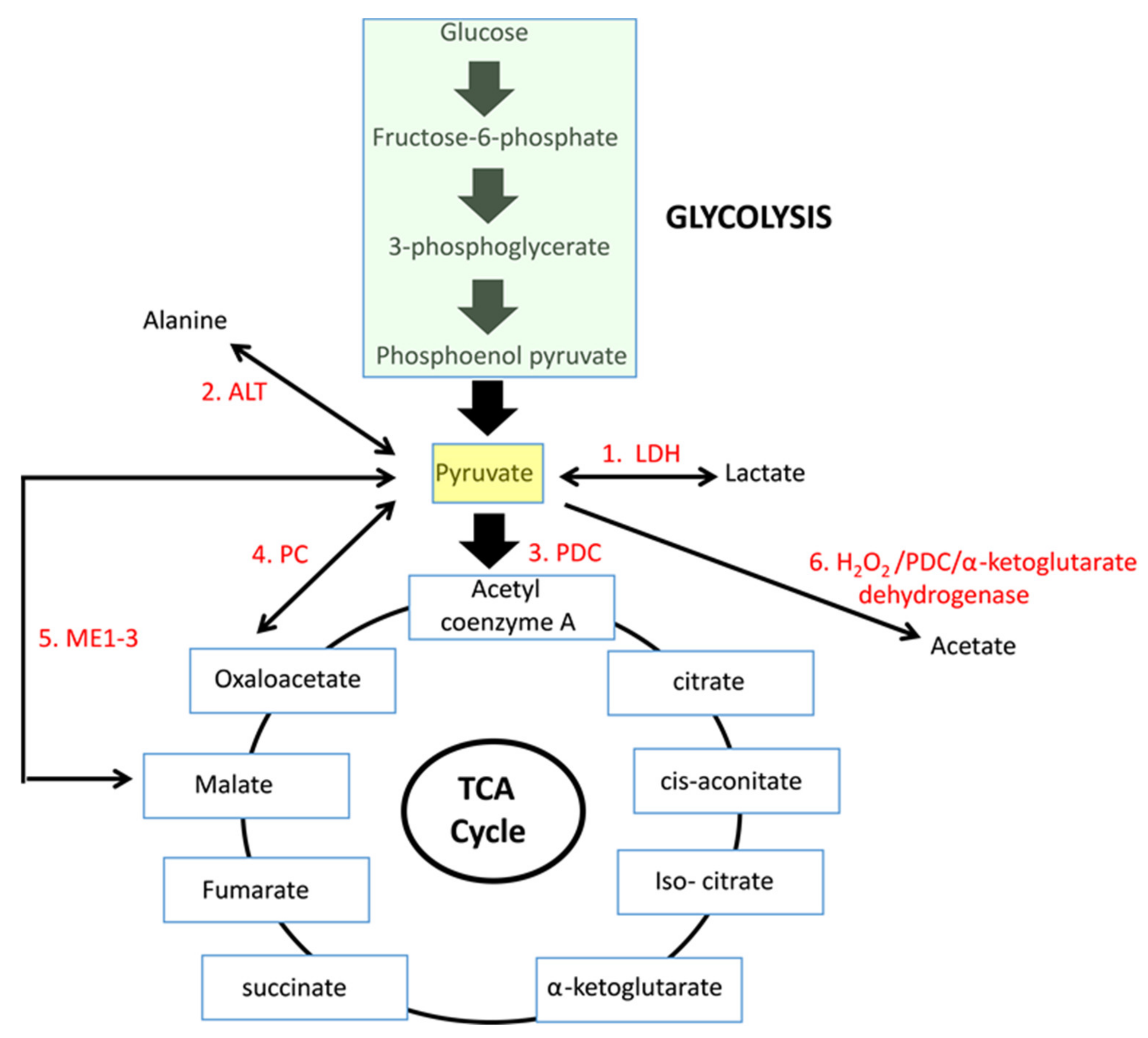



Cells Free Full Text The Metabolic Fates Of Pyruvate In Normal And Neoplastic Cells Html




Name The End Product Of Anaerobic Metabolism In Muscle Cells




Cancers Free Full Text Lactate In The Tumor Microenvironment An Essential Molecule In Cancer Progression And Treatment Html




Fermentation Definition And Examples Biology Online Dictionary
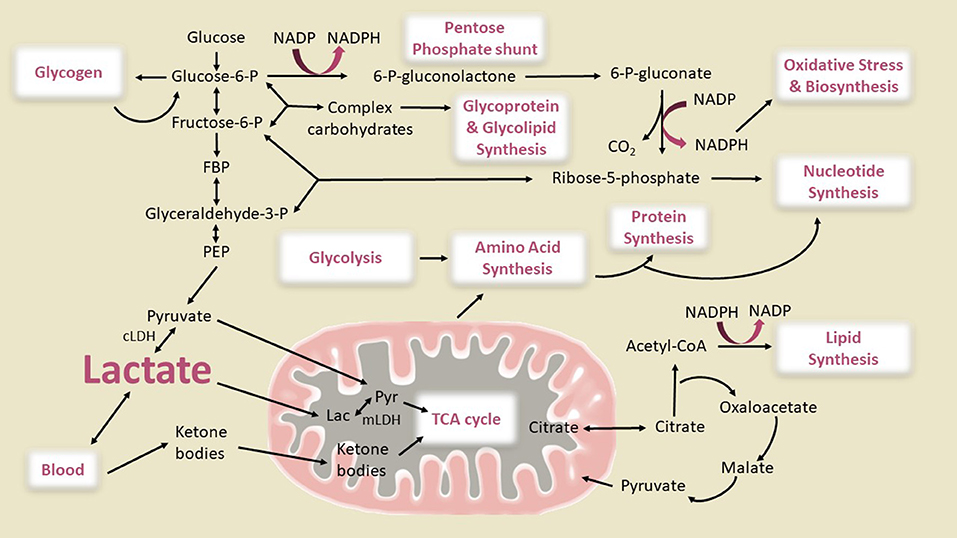



Frontiers Trajectories Of Brain Lactate And Re Visited Oxygen Glucose Index Calculations Do Not Support Elevated Non Oxidative Metabolism Of Glucose Across Childhood Neuroscience



91 Anaerobic Respiration Ethanol And Lactate Pathways




Lactate The Ugly Duckling Of Energy Metabolism Nature Metabolism



When An Individual Is Exercising Heavily And When The Muscle Becomes Oxygen Deprived Muscle Cells Convert Pyruvate To Lactate What Happens To The Lactate In Skeletal Muscle Cells Quora
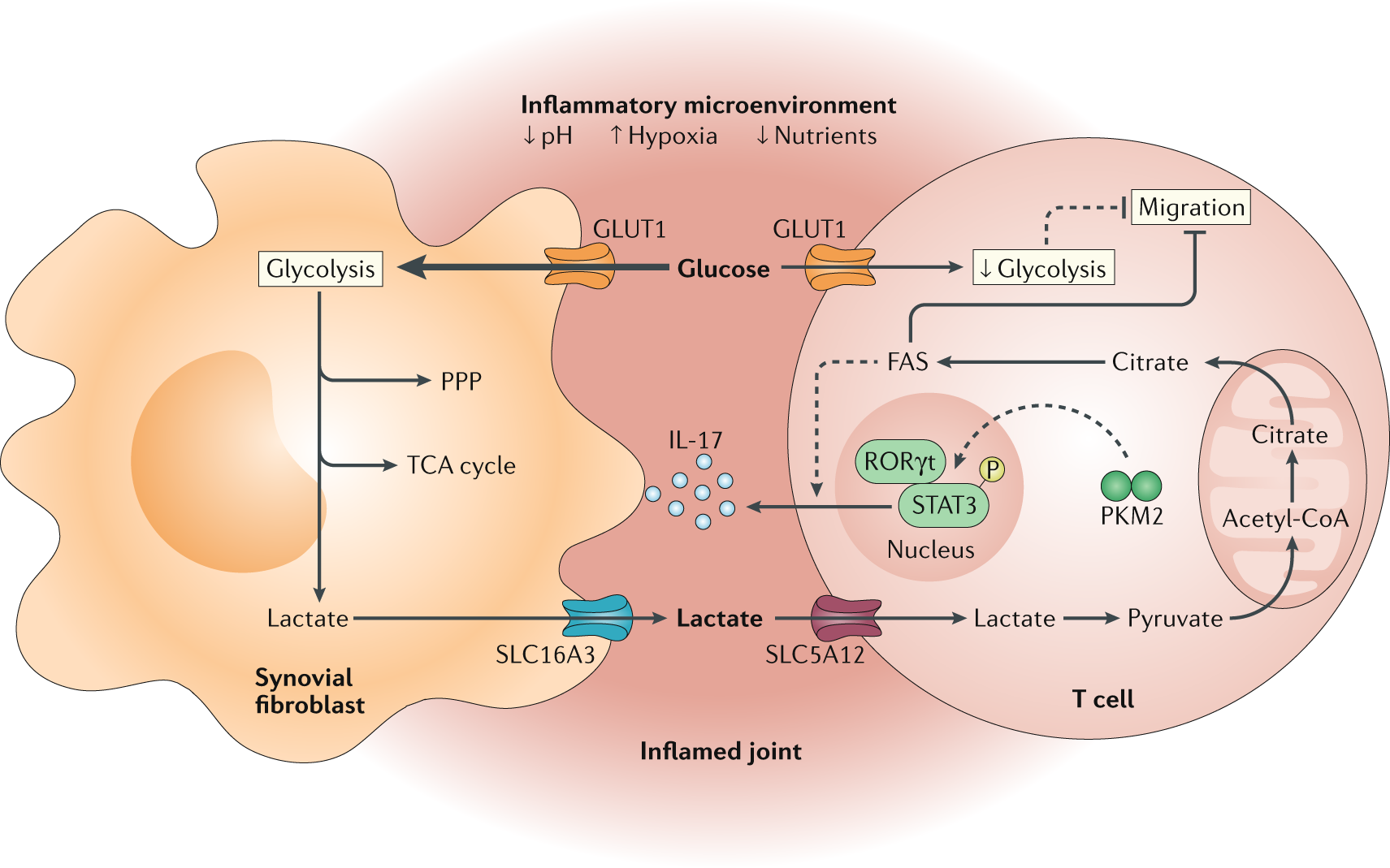



Lactate Modulation Of Immune Responses In Inflammatory Versus Tumour Microenvironments Nature Reviews Immunology




The Science And Translation Of Lactate Shuttle Theory Sciencedirect




Glycolysis An Overview Sciencedirect Topics



Chapter 14 Glycolysis And The Catabolism Of Hexoses
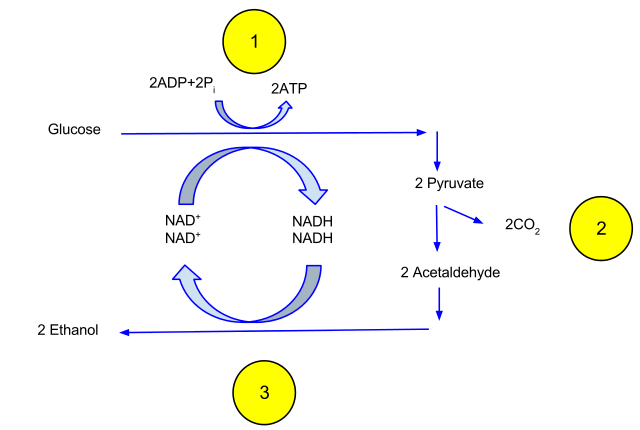



Fermentation Mitochondria And Regulation Biological Principles




Lactate Fermentation Anaerobic Fate Of Pyruvate Youtube



Graphics Gallery An Antibody Molecule
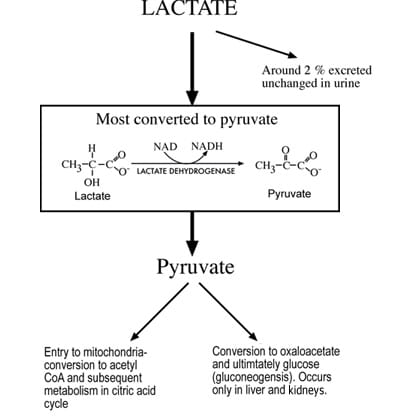



Lactate And Lactic Acidosis



Cellular Metabolism And Fermentation




Biology Notes For A Level 91 Anaerobic Respiration Ethanol And Lactate Pathways



What Is An Anaerobic Pathway In Which Pyruvic Acid Is Converted Into Lactic Acid Socratic




Ijerph Free Full Text Decreased Blood Glucose And Lactate Is A Useful Indicator Of Recovery Ability In Athletes Html




How Does The Body Switch Between Aerobic And Anaerobic Respiration Biology Stack Exchange




Glycolysis An Overview Sciencedirect Topics




Energy Metabolism Chapter Ppt Download



Chapter 14 Glycolysis And The Catabolism Of Hexoses



Cellular Metabolism And Fermentation




Lactate As A Signaling Molecule Journey From Dead End Product Of Glycolysis To Tumor Survival
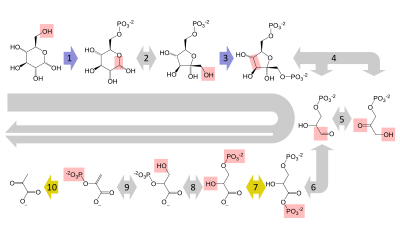



Glycolysis Wikipedia



1




Running Science 101 Metabolic Pathways Artc



Chapter 14 Glycolysis And The Catabolism Of Hexoses



2




How Is Nad Used In Lactic Acid Fermentation After It Is Oxidized From Nadh Biology Stack Exchange




Cori Cycle And Glucose Alanine Cycle These Are The Cycles That Link Download Scientific Diagram




The Science And Translation Of Lactate Shuttle Theory Sciencedirect



Cori Cycle Wikipedia
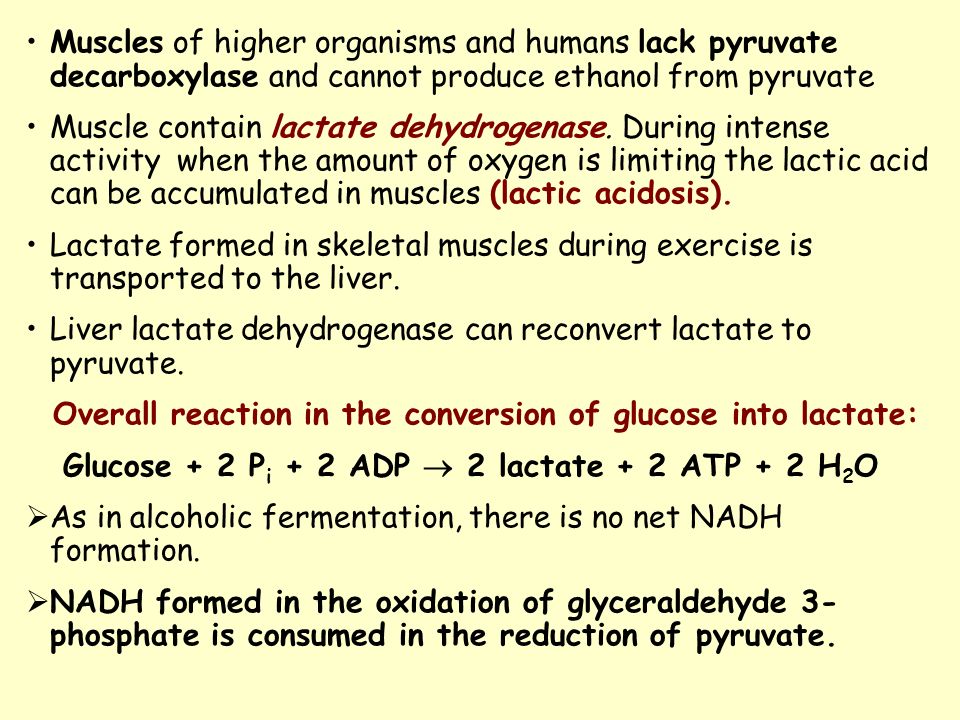



The Fate Of Pyruvate The Sequence Of Reactions From Glucose To Pyruvate Is Similar In Most Organisms And Most Types Of Cells The Fate Of Pyruvate Is Variable Ppt Video Online




Mitochondrial Lactate Metabolism History And Implications For Exercise And Disease Glancy 21 The Journal Of Physiology Wiley Online Library
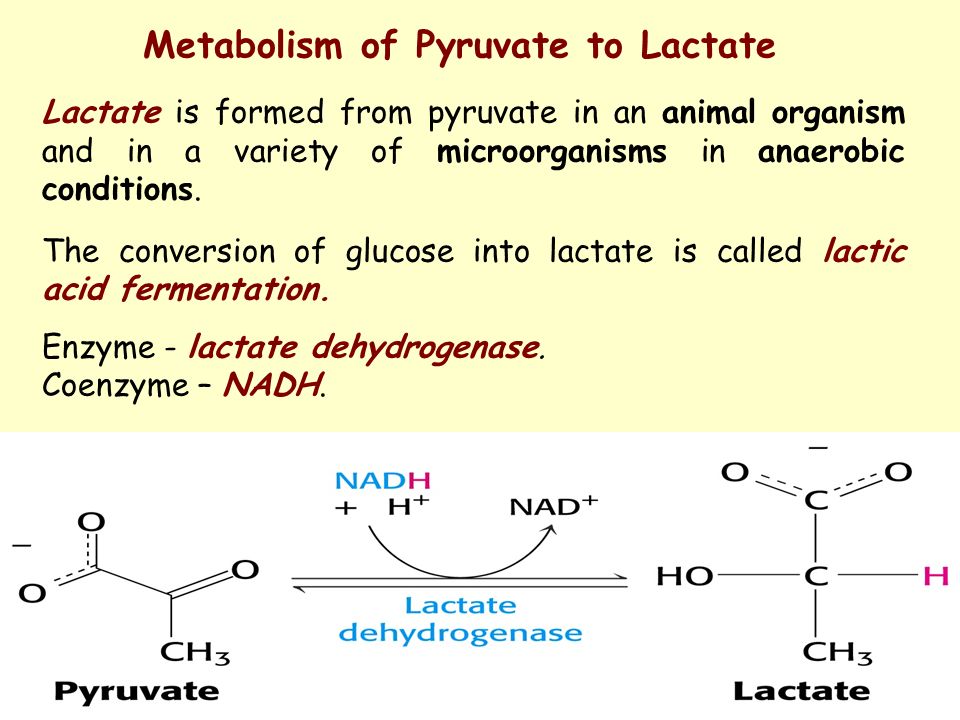



The Fate Of Pyruvate The Sequence Of Reactions From Glucose To Pyruvate Is Similar In Most Organisms And Most Types Of Cells The Fate Of Pyruvate Is Variable Ppt Video Online




8 Energy Systems In Muscle Cells Ppt Download



3 7 Cell Respiration Bioninja
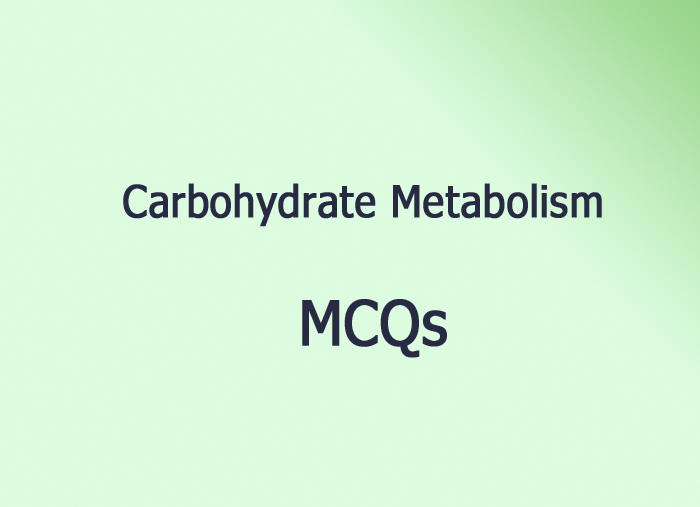



Carbohydrate Metabolism Mcqs Focus Dentistry




Biology Notes For A Level 91 Anaerobic Respiration Ethanol And Lactate Pathways
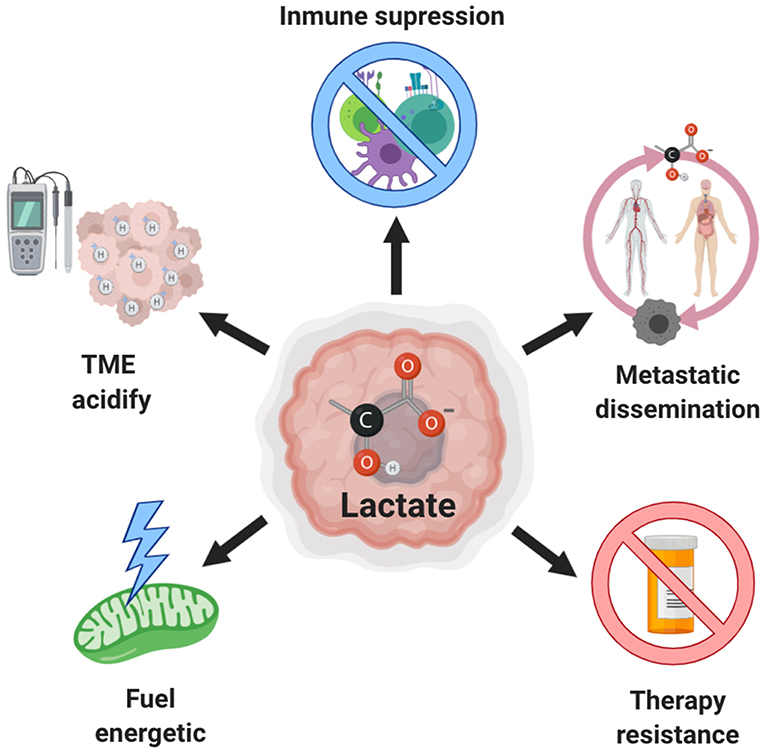



Frontiers Lactate In The Regulation Of Tumor Microenvironment And Therapeutic Approaches Oncology



2
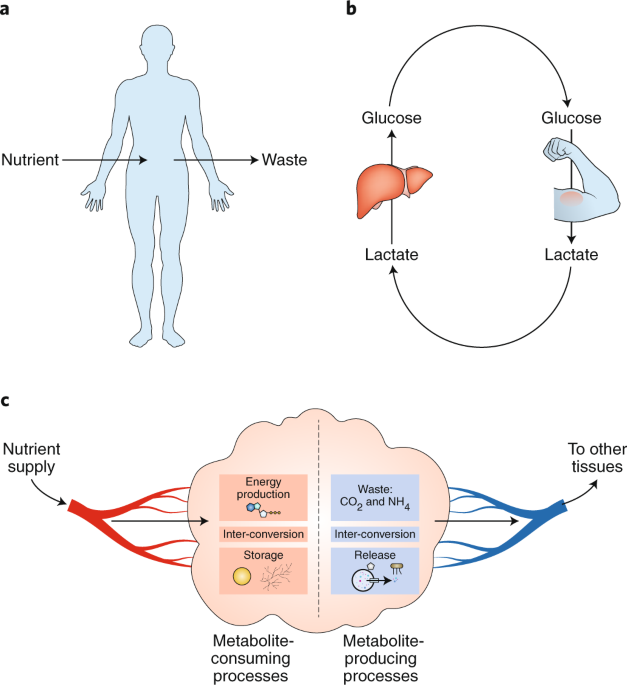



Quantitative Flux Analysis In Mammals Nature Metabolism
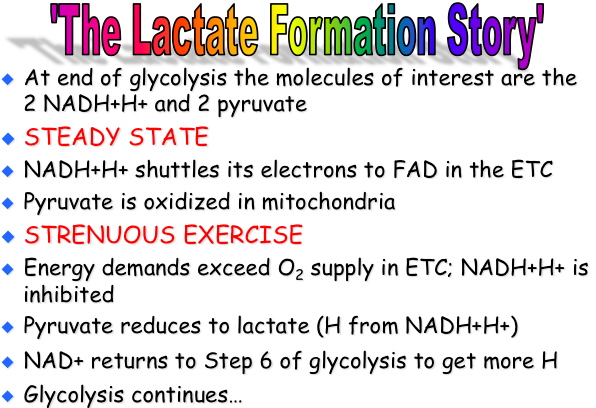



Lactate Formation




Cellular Respiration Flashcards Quizlet
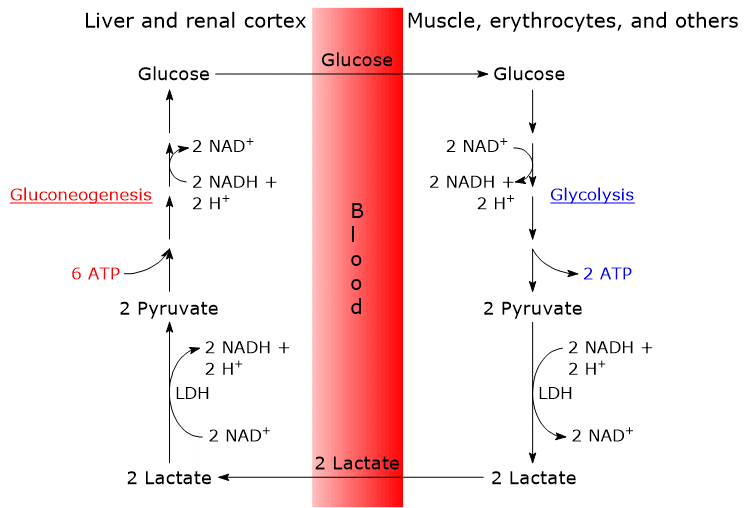



Cori Cycle Significance Biochemistry And Function




Sensors Free Full Text Evaluating The Possibility Of Translating Technological Advances In Non Invasive Continuous Lactate Monitoring Into Critical Care Html
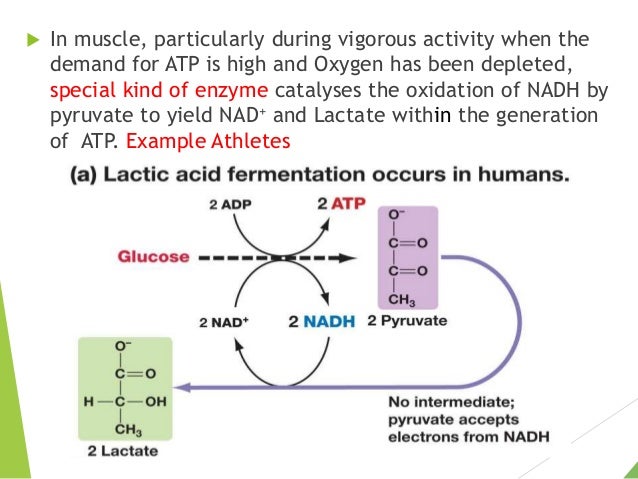



Fate Of Pyruvate Under Anaerobic Condition




During Exercise When The Body Lacks An Adequate Supply Of Oxygento Support Energy Production The Homeworklib



Cellular Metabolism And Fermentation




Lactate Not Pyruvate Is The End Product Of Glucose Metabolism Via Glycolysis Intechopen




Biochemical And Structural Insights Into How Amino Acids Regulate Pyruvate Kinase Muscle Isoform 2 Journal Of Biological Chemistry




Outline Of Lactate Metabolism With Insufficient Oxygen Supply Download Scientific Diagram
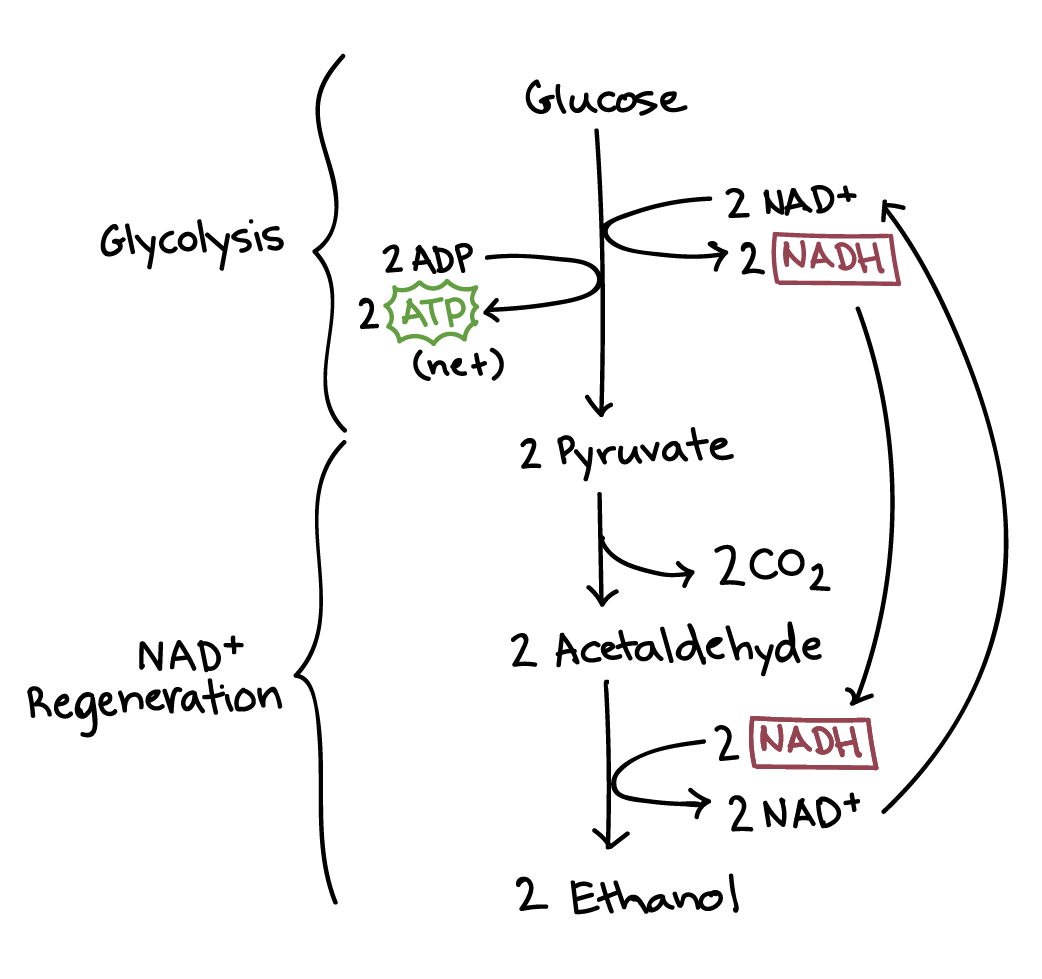



Fermentation And Anaerobic Respiration Cellular Respiration Article Khan Academy
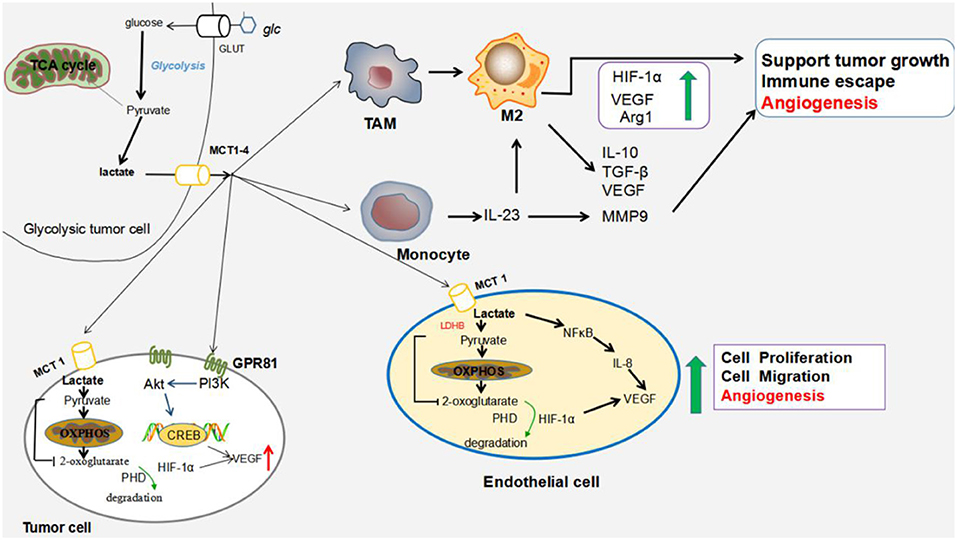



Frontiers Lactic Acid A Novel Signaling Molecule In Early Pregnancy Immunology



3




References In Human Metabolism Pathways And Clinical Aspects Surgery Oxford International Edition




Krebs Cycle An Overview Sciencedirect Topics




Anaerobic Respiration Bioninja
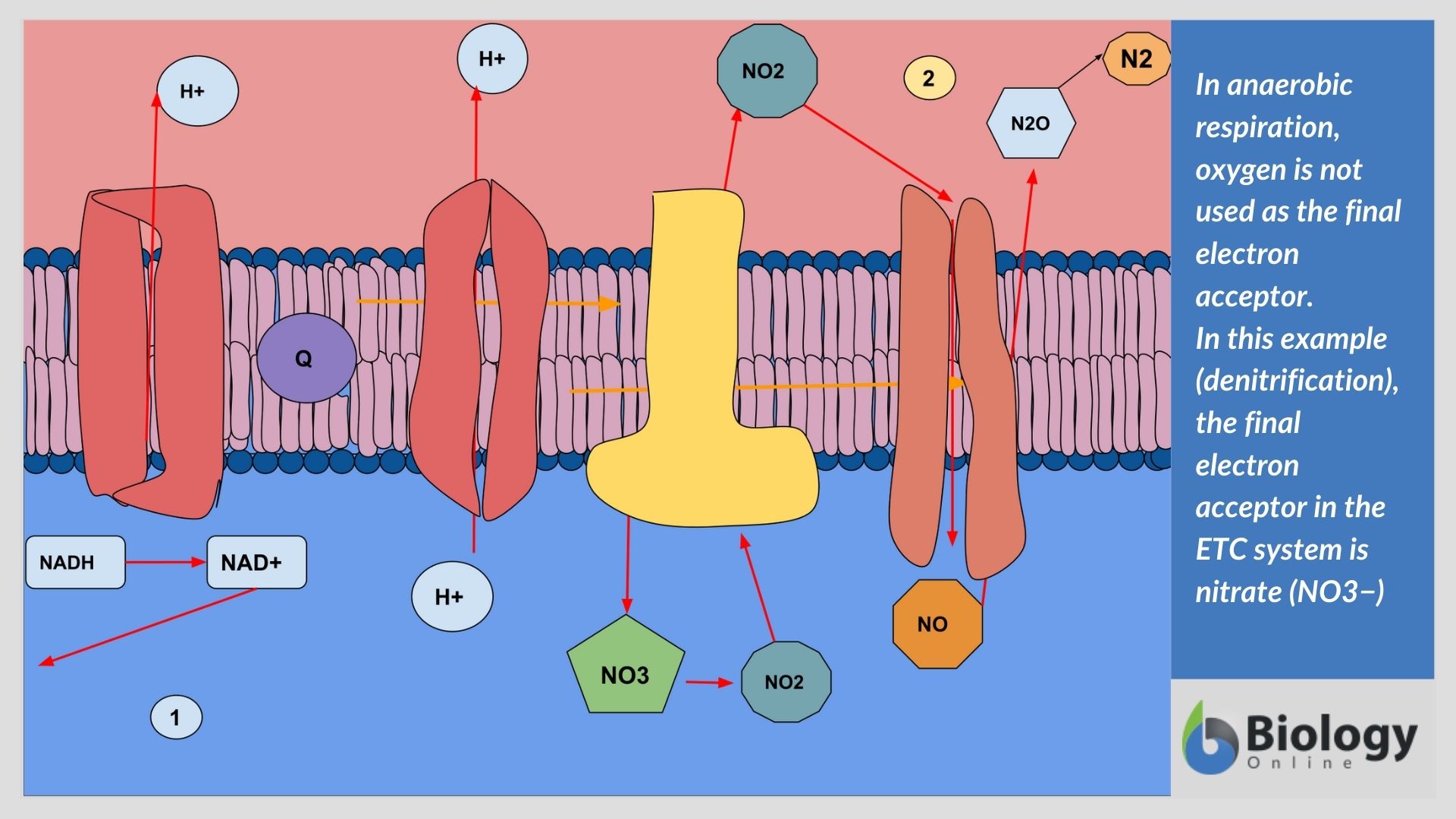



What Is Anaerobic Respiration The Definitive Guide Biology Online
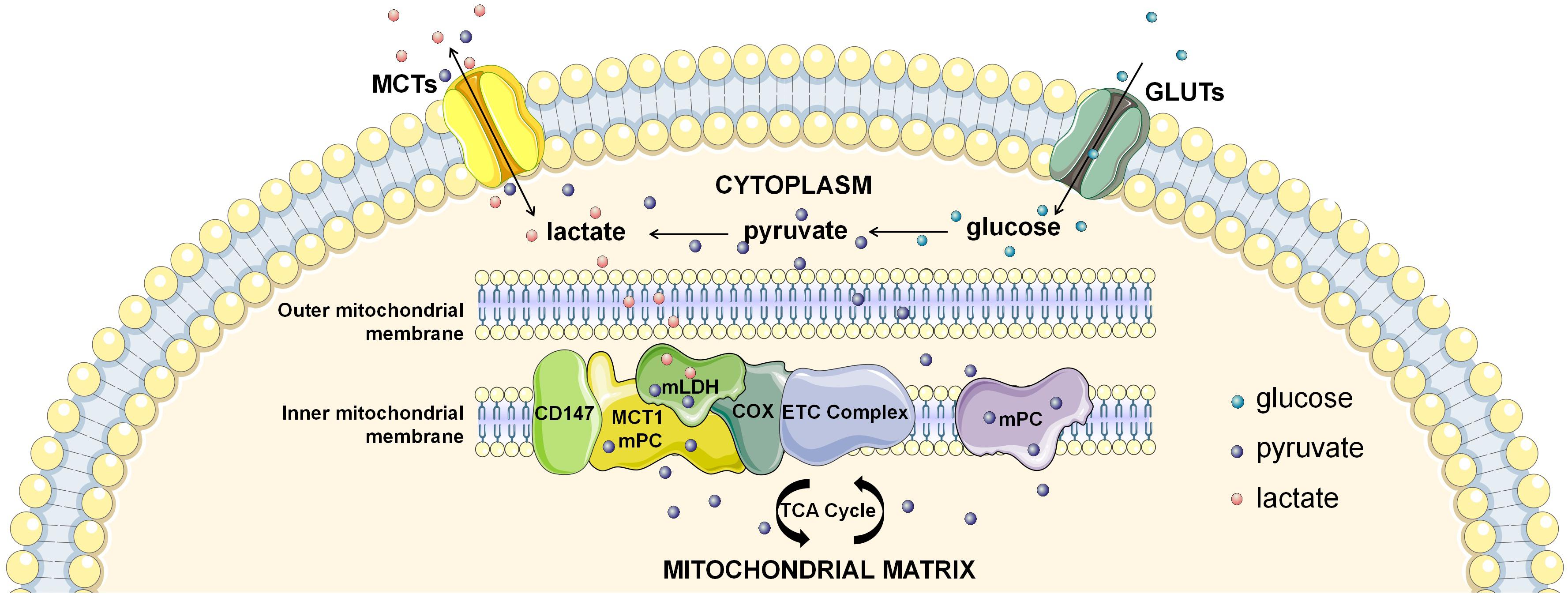



Frontiers Lactate And Myocadiac Energy Metabolism Physiology




15 3 Lactic Acid Fermentation Chemistry Libretexts



Cellular Metabolism And Fermentation



1
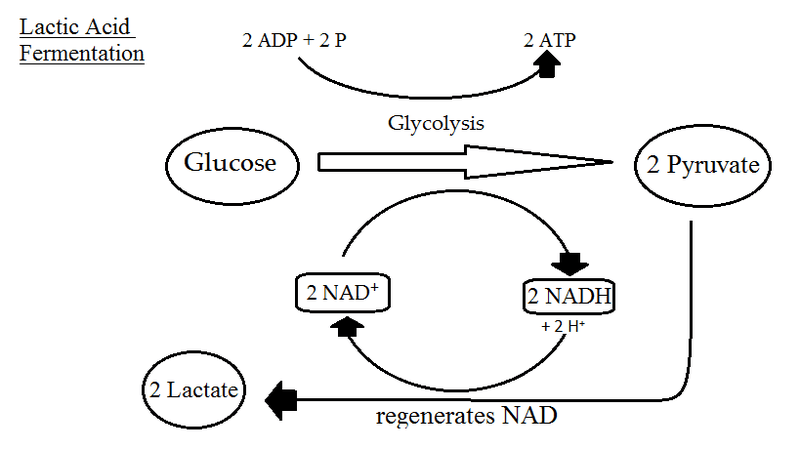



Fermentation Mitochondria And Regulation Biological Principles



2




Glycolysis An Overview Sciencedirect Topics




Fate Of Pyruvate Acetyl Coa Lactate Alcohol Formation



0 件のコメント:
コメントを投稿